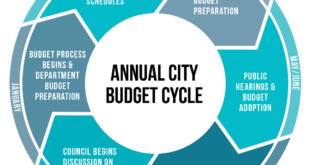By Peter Wagner
Newspapers and shopper publications in Iowa and surrounding states are again carrying a major grocery chain insert that pulled out of all papers the end of December. I am purposely leaving out the name of the chain.
The return of the insert is good news for us for the foreseeable future. Good for our papers because the weekly insert revenue is important to our company’s bottom line. Good for the grocery chain because local community families look to our local publications for the weekly food specials every week.
 The local and metro papers alike were dropped by the chain in response to many unknowns and explosive changes in modern marketing. Believing all papers are deluded by huge circulation losses, the company’s top management decided to use just direct mail, social media, blast emails and increased television to promote shopping their stores. The emails would be sent to customers who had shared their email addresses as part of the chain’s gas discount program.
The local and metro papers alike were dropped by the chain in response to many unknowns and explosive changes in modern marketing. Believing all papers are deluded by huge circulation losses, the company’s top management decided to use just direct mail, social media, blast emails and increased television to promote shopping their stores. The emails would be sent to customers who had shared their email addresses as part of the chain’s gas discount program.
But the direct mail program, with its much higher postal costs, was usually directed just to homes within five miles of the store or patrons who were known for high volume purchases. That might work well in major markets, but not in rural areas where the next community in any direction was at least seven to 10 miles down the road.
Part of the food chain’s reasoning was the company would save money by controlling duplication of delivery where one paper overlaps another. Part of it was the hope the change would reach more younger buyers. Much of it, as we said earlier, was the food corporation was hearing that “newspapers subscription numbers were falling across the nation” and major marketing changes were needed to maintain and grow their market share.”
‘Sky is falling’
It’s what I call the “Chicken Little, the sky is falling” fallacy promoted by social media platforms every day. The surge of electronic publications, continually posting updates to computers, tablets and mobile phones, has changed the reading habits of the younger generation. But those posts are usually either reports of breaking national or international news or unverified individual observations or opinions.
Only the local newspaper still delivers the church softball league scores and the details regarding the heated discussion at the recent city council meeting. That is why recent newspaper industry surveys are reporting the 30-year-olds and older demographic is growing for local, community newspapers.
Plus, not all papers are suffering major subscriber losses. The Detroit Free Press is a good example of a paper often cited as an example that newspapers are failing. That once powerful voice across Michigan has lost more than half of its paid subscribers over the last five years. The Free Press now only offers home delivery three days a week, the days when they have the most inserts. The other four days readers have to buy the newspaper at a nearby convenience store.
But remember, Detroit also lost more than half of its population when America’s automotive industry collapsed. There are 900,000 fewer families in Detroit to subscribe to the Detroit newspaper.
Subscriber numbers stay strong
Papers in smaller, rural communities have done much better. From a high point when our N’West Iowa REVIEW reached close to 6,600 homes, The N’West Iowa REVIEW has only lost about 400 subscribers. We credit that retention figure to our large weekly package of news and feature sections, strong regional sports coverage and Saturday morning delivery.
We have no bad feelings toward the food chain for testing new marketing ideas. Both of Iowa’s major, locally founded grocery chains have been good advertisers in our papers for many years. Even while the chain discontinued the inserts, the local stores in our two largest communities have continued to purchase occasional print ads promoting image and occasional specials.
Until recently the food chain left almost all the marketing decisions to the local manager. He, they reasoned, was most aware of the local situation and able to get the most return on investment from every promotional dollar spent. The chain built its five-state leadership position through local decision-making policies.
But the retail landscape has changed the last few years. Wal-Mart, Target and other general merchandise discounters have all chosen to enter the grocery business with super stores featuring large grocery sections. Sam’s Clubs and Costco are cutting deeply into the purchase of the basics and even meat, produce and bakery sales.
One area business person told me she never visits a grocery store anymore. Instead, she gets a box of ready-to-fix meals delivered to her door twice a week.
Finally, just about every kind of retail business is starting to sell at least some grocery items. Their explanation is families only buy gas, an item of clothing or greeting cards once a week but often need milk or bread daily. Selling at least the basic food items can greatly increase the customer count for any kind of store.
And don’t overlook Amazon. That internet retailer is out to eat everybody’s lunch. They want all the grocery business as well as every town’s book, clothing, health goods and gift business, too. If Amazon has its way, there will be no main street serving any town anywhere.
But, for the moment at least one major chain has discovered that digital media and direct mail won’t do it alone. There is still a need for newspaper advertising to succeed. Newspaper and shopper readers want to continue their decades old tradition of spreading out the weekly printed page of specials out on the kitchen table to see what’s good to buy that week.
So, we welcome back the weekly inserts with open arms. The revenue is important to us if we want to continue the size and depth of our printed products.
But more important, the return of the inserts proves the importance of print advertising, especially here in N’West Iowa where individual beliefs in higher education, the community library and reading the local paper remains high. We hope we can continue to be a worthy conduit between Iowa’s two important food chains and our discerning readers for years to come.
 Nevada Press Association The best in Nevada journalism since 1924
Nevada Press Association The best in Nevada journalism since 1924




